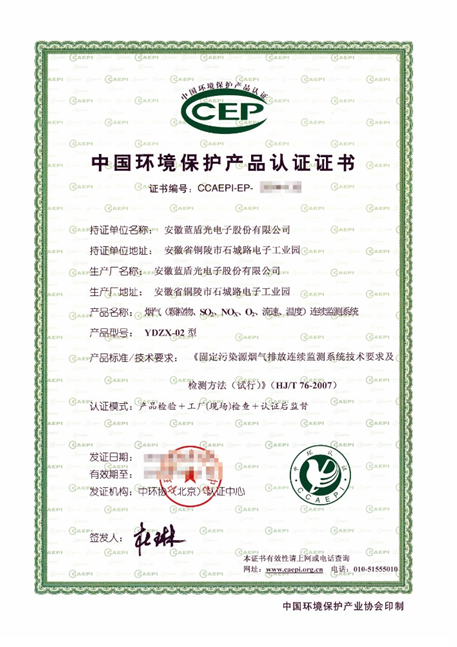
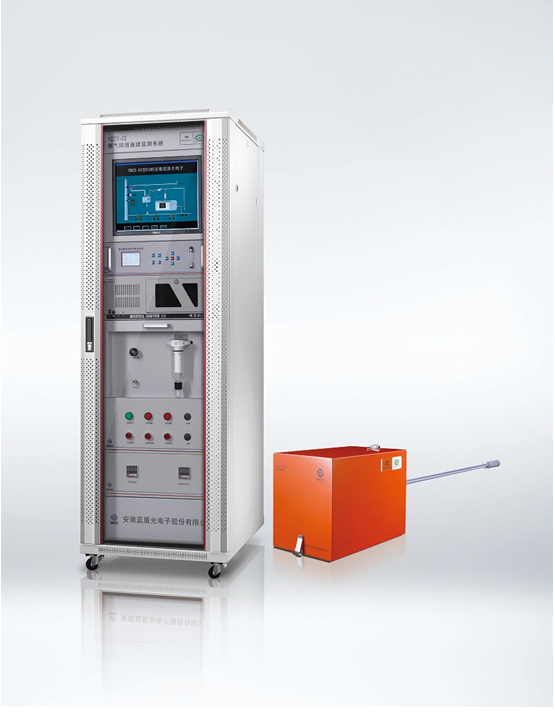
Product Introduction: This product is designed for the online monitoring of flue gas concentration from fixed pollution sources, primarily used in industries such as power generation, petrochemicals, cement, and steel. It measures pollutant concentrations in flue gas through direct sampling, while also capturing parameters like particulate matter content, flue gas temperature, pressure, flow rate, and oxygen content. The data is transmitted to a data collection and processing subsystem, which calculates pollutant emission rates and quantities. Various parameters and graphs can be displayed and printed, with the capability to transmit data to the enterprise’s pollution monitoring center (central station) and environmental authorities via wired or wireless connections.
System Principle:
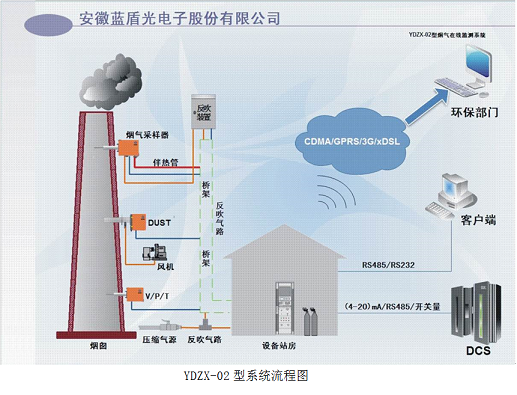
Gas Pollutant Monitoring Subsystem: This subsystem is based on Differential Optical Absorption Spectroscopy (DOAS) technology. It utilizes a UV analyzer where UV light emitted from the source is collimated and passed through a measurement chamber. As the sample gas flows through the chamber, it absorbs UV energy at specific wavelengths. The absorbed light is then transmitted via fiber optics to the spectrometer, where it is dispersed by a grating. A diode array detector converts the dispersed light signal into an electrical signal, capturing continuous absorption spectrum information of the gases. Finally, the gas concentrations are measured using the DOAS technique.
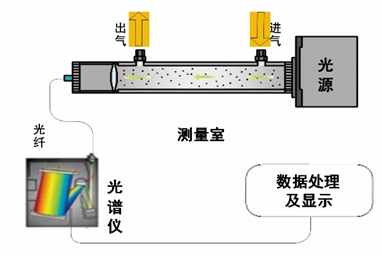
Analyzer Measurement Schematic
Particulate Matter Monitoring Subsystem: This subsystem is based on the principle of infrared backscattering. An infrared beam is directed into the flue duct, where it interacts with particulate matter, resulting in light scattering. The intensity of the scattered light varies with changes in particulate concentration. The backscattered light is focused through a lens and received by a sensor, which converts the received light signal into an electrical signal. This signal is then processed by amplification and computation circuits to calculate the real-time concentration of particulate matter.
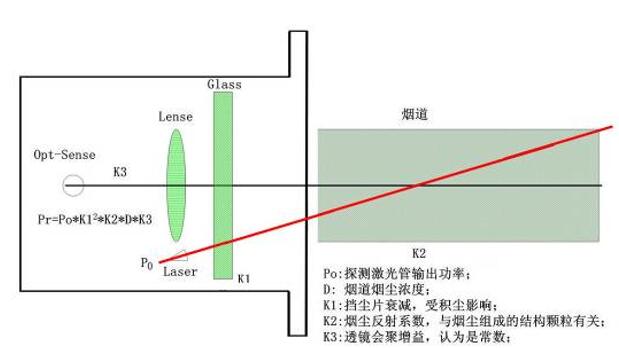
Analyzer Measurement Schematic
Environmental Certification:
